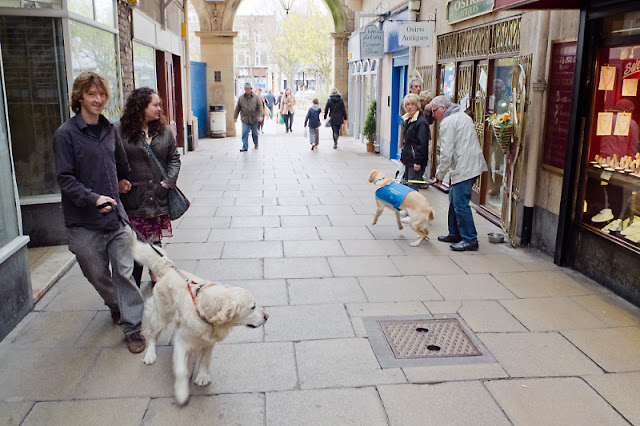Not only has digital photography altered the way people take photographs, process and view them but the Internet has altered the reasons why people take photographs and, in some cases, added a pressure to take more. Did people ever start '365' projects where they take one photo every day before there was a place for them to share their pictures widely? Maybe a handful of people did, but now it is widespread.
Blogs and sharing sites also add a demand that they be updated regularly. This brings a pressure to take and post photos. Some might say that this makes for more successful photography along the lines of old adage 'the more you shoot the better you get'. It can also lead to the taking and posting of any old rubbish. 'I need a photo a day, I'll take one and use that.' Doesn't matter what it's of, how little thought has gone in to it, or if the person with the camera actually wanted to take a photograph that day. It had to be done.
It's as if failure, to take any photograph let alone a half decent one, isn't an option. Yet it's the simple law of averages, which has always applied to photography, that even the best will have more failures than successes, and that the line between one and the other can be very narrow. It was, therefore both interesting, and refreshing, to see this aspect of photography covered on
The Guardian website the other day. It followed on another piece about
photographs that hadn't been taken . Two thought provoking pieces about 'failure'.
Something else that has crept up on me, although it has been around for some time, is the commoditisation of photography. The neat packaging of the process for profit. I can understand how people who have made their living from taking photographs and are now feeling the financial squeeze as everyone becomes a photographer and gives their pictures away for peanuts or less can turn to teaching photography. Ironically to people who have, or will, be taking the food from their mouths! Workshops and one-on-one tuition for a fee abound on the Internet and in the pages of photography magazines.
Increasingly prevalent is the packaging of holidays (usually to exotic locations) for photo trips with a professional photographer as a 'guide'. This seems to be the way a lot of people want to pursue their hobbies today. It's another case of failure not being an acceptable option. Rather than go and find out for themselves what it is they want to photograph and where and how they want to photograph it, people see photographs they like and pay someone to help them replicate them. And all the while these paying customers probably consider themselves to be creative.
It's become a cliché that genius is 1% inspiration and 99% perspiration. When it comes to creativity (from the word creation rather than the word imitate) the cliché is true. In this world of instant results on demand (or on payment) this truth seems to have been forgotten.
In the spirit of the first part of this post here's a failure, posted because a blog demands something be posted, from yesterday. A day of sunshine, and less than 1% inspiration.
There are some interesting things going on in the photograph. This is more an intellectual photograph than a picture. There's the total lack of any water behind the sign, let alone any deep water, for one thing. It's also about the man-made and natural environments and how they encroach on each other. It's about obscurity and revelation. It's about what lies beyond the entertainments of a seaside town. And there is a formal aspect to the composition. I think my ambition has exceeded my ability, though. It's a failure. But if you don't try to push your limits and fail, you'll end up repeating what you've done before. Or perhaps I need to book myself some tuition?
 Having a couple of hours to kill, and with the sun shining, I took the opportunity for some more revisitations.That went quite well, and there are only a handful left to make. What I'm going to do with the results, if anything, remains to be seen. Between sites I thought I'd see if what I said about using a large camera up close with strangers was correct. It was.
Having a couple of hours to kill, and with the sun shining, I took the opportunity for some more revisitations.That went quite well, and there are only a handful left to make. What I'm going to do with the results, if anything, remains to be seen. Between sites I thought I'd see if what I said about using a large camera up close with strangers was correct. It was. Again these are not great pictures, posted merely to make a point.
Again these are not great pictures, posted merely to make a point.










































